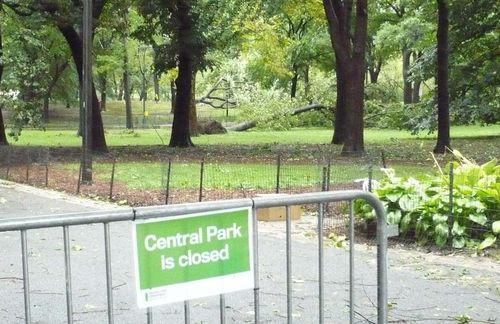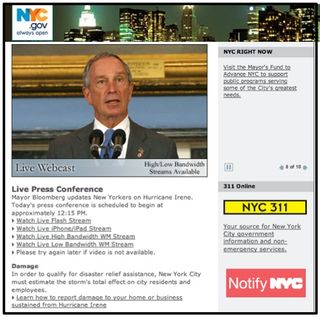 I've spent the last week worried about a long-planned trip to New York City. Hearing about the pending Hurricane Irene messed up a schedule I had organized. But I needed to be in New York for an engagement on Monday.
I've spent the last week worried about a long-planned trip to New York City. Hearing about the pending Hurricane Irene messed up a schedule I had organized. But I needed to be in New York for an engagement on Monday.
This is a post about NYC Mayor Michael Bloomberg. From my vantage point, he and his office did a fantastic job readying the city for the storm. I had been watching his response to the upcoming weather event with more than a casual interest because of my travel plans.
Based on what the Mayor's office was saying, I decided to arrive in New York one day early - Saturday morning - the day before the storm's arrival. I rode out the storm in a hotel room, venturing out a few times when it was safe in order to snap some photos.
Communicator-in-Chief
In the run up and during the peak of Hurricane Irene, Mayor Bloomberg himself delivered detailed press briefings nearly every few hours which were broadcast on the Web, television and radio. A transcript was offered. There was a sign-language interpreter. Information was also available in Spanish, sometimes delivered by the Mayor himself.
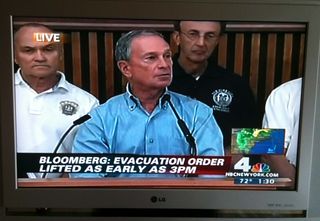 Mayor Bloomberg faced a difficult decision regarding evacuation of the zones that were prone to flooding. A detailed map was offered on the Mayor’s site along with Hurricane safety information. Tens of thousands of people were under mandatory evacuation orders and the NYC ran 81 emergency shelters (many manned by ordinary city employees such as accountants).
Mayor Bloomberg faced a difficult decision regarding evacuation of the zones that were prone to flooding. A detailed map was offered on the Mayor’s site along with Hurricane safety information. Tens of thousands of people were under mandatory evacuation orders and the NYC ran 81 emergency shelters (many manned by ordinary city employees such as accountants).
One of the most important decisions was to move 9,000 people from senior homes and hospitals because of a fear of power outages. Officials were particularly worried about being able to serve anyone who had an emergency medical condition.
The city shut down the entire mass transit system (the first time this has ever been done) and elevators were ordered shut down for fear that power would go out and trap people in the elevator cars. Central Park, a massive area, was completely closed.
Making these sorts of decision is the true test of a leader.
If you lock down the city and the storm is a non-event, you look silly. If you don’t take the storm seriously and then there is a dangerous situation (like Katrina), then you look like you’re out of touch.
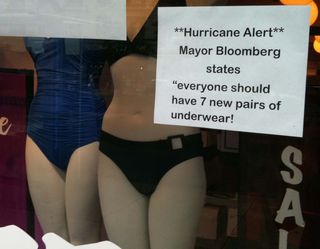 Prior to the storm nearly everyone I ran into was taking the Mayor’s warning seriously. People who were told to evacuate did so. There were very few people out during the peak of the storm (I checked out my window). As a result of New Yorkers heeding the warnings, there were very few casualties.
Prior to the storm nearly everyone I ran into was taking the Mayor’s warning seriously. People who were told to evacuate did so. There were very few people out during the peak of the storm (I checked out my window). As a result of New Yorkers heeding the warnings, there were very few casualties.
Mayor Bloomberg is a true leader. He was the chief communicator during the situation. He did not delegate the role of spokesperson. His real-time briefings were everywhere you turned on television this past weekend.
It may be cliché, but Mayor Bloomberg said this afternoon that the crisis brings out the best in New Yorkers and its true. Crime was lower than normal and 911 emergency calls were also lower than normal. People helped one another.
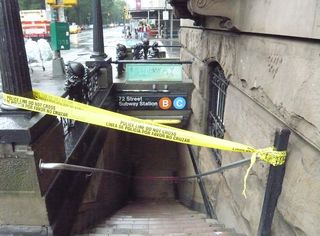 Learning from Mayor Bloomberg
Learning from Mayor Bloomberg
I think all leaders - company CEOs, nonprofit heads, university presidents and others - can learn from Mayor Bloomberg. When an emergency or crisis situation develops, you yourself need to communicate. Get out there and let your public know what's going down.
Sadly many CEOs don't communicate. Think BP, Toyota, and others who hide behind spokespeople. Don’t do that. Look to Mayor Bloomberg as your model of successful communications.
